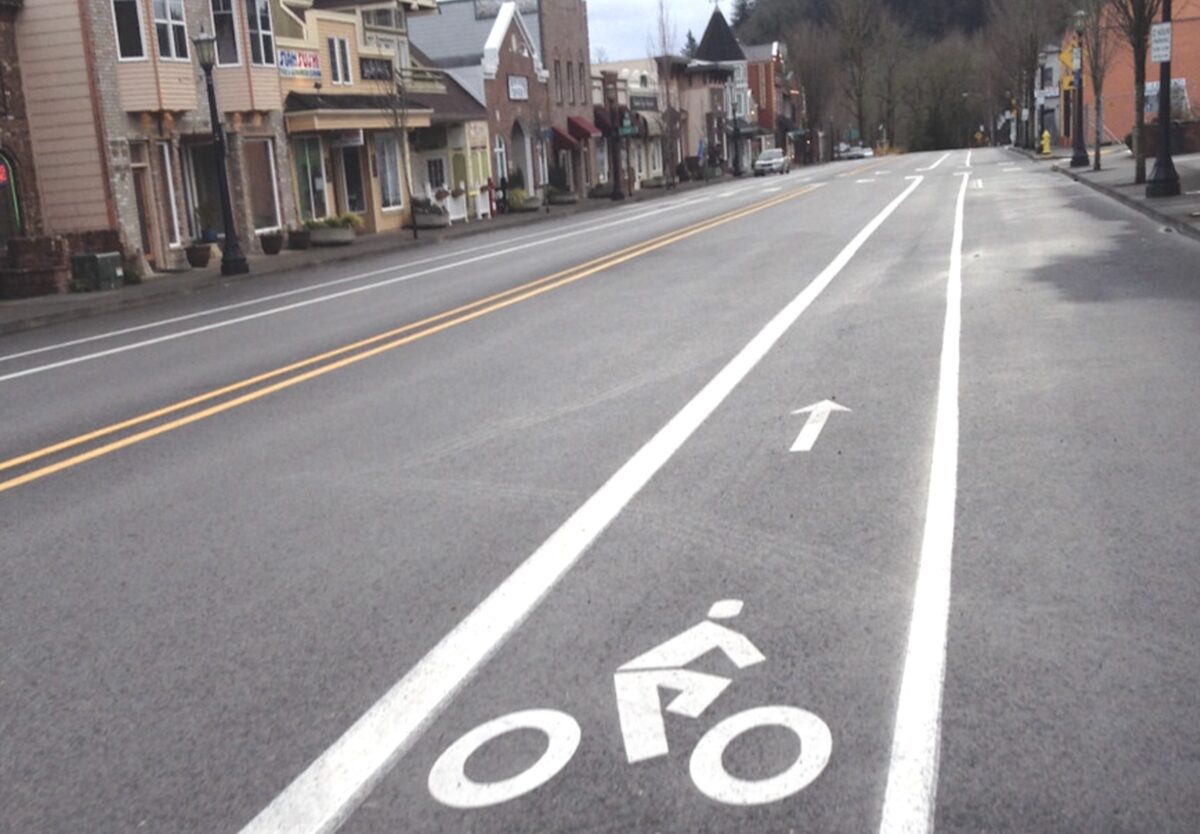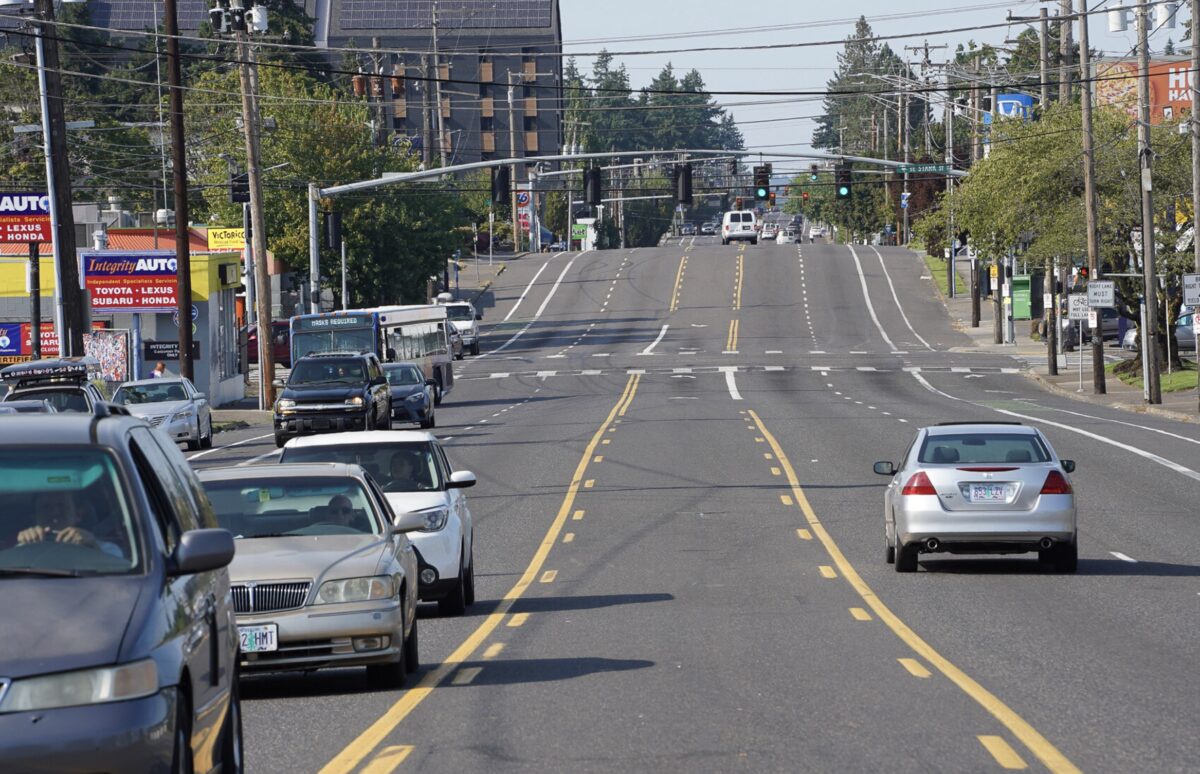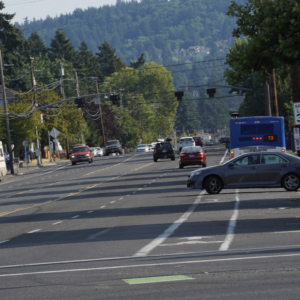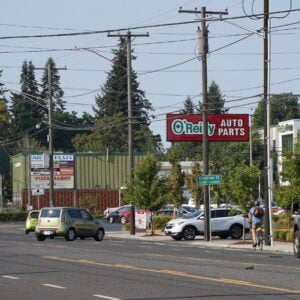
Since we covered the big US Department of Transportation grants last week, we’ve learned a bit more detail about what exactly they’ll fund.
You’ll recall Portland received two notable chunks of funding: $20 million to PBOT for 122nd Avenue and $2.4 million to Metro to develop safety plans.
Here’s what we’ve learned since our first story was published:
Metro – $2.4 million
Metro applied for the grant on behalf of three jurisdictions: East Multnomah County, the City of Tigard, and Washington County (and one-third of the grant will go directly to them).
Here’s Metro’s description of how the money will be spent:
Metro’s grant will be used to work with regional partners perform data collection, enhanced analysis, and identify a list of quick-build projects across the region, and to support the development of comprehensive Transportation Safety Action Plans for Washington County, Tigard, and Multnomah Counties and the cities of East Multnomah County. The project will build upon the 2018 Regional Transportation Safety Strategy and bring a focus on advancing equity outcomes and pedestrian safety across the region. This grant is well-timed with Beaverton’s upcoming Transportation System Plan update and city staff are coordinating with Metro staff on Beaverton’s participation in this regional effort…
Metro will work with joint applicants and other partners to prioritize pedestrian crossing locations across the region for quick build, high-impact projects…. The county and city safety actions plans will be data-driven and focus on identifying near-term, effective strategies to address locally identified safety issues. Strategies include setting appropriate speed limits, applying proven countermeasures at intersections, addressing driver impairment and distraction, crosswalk visibility enhancements, and accessibility improvements. Inclusive, culturally-appropriate and meaningful engagement of communities and jurisdictional partners will be used throughout the planning process.
For their part, Multnomah County says they’ll use $444,000 of the grant to develop a new Safety Action Plan that covers streets in the cities of Fairview, Gresham, Troutdale and Wood Village. The City of Tigard will use $240,000 to develop a Vision Zero Action Plan.
Metro Deputy Director Margi Bradway told BikePortland the funds will be,
“Focused on reducing traffic fatalities, will help us address pedestrian safety in greater Portland — a major concern in many of our communities, but especially in those with a history of less public investment focused on protecting people walking to work, school, the store or the bus. Metro is excited for the opportunities this will create to move our transportation system closer to Vision Zero.”
Portland Bureau of Transportation – $20 million
In addition to $20 million in updates coming to 122nd Avenue we shared initially, PBOT will add their own funding to make an even greater impact on the street.
In a statement about the grant, PBOT said they plan to add $5 million in funds to the grant from the Fixing Our Streets program that will allow them to pave about one mile of 122nd from SE Foster Road to Holgate Street.
The pot for 122nd will get even sweeter with $6.4 million grant PBOT has already received from Metro (via federal “flexible funds”) that will allow them to install four new “enhanced crossings” on the corridor at NE Beech, NE Sacramento and Brazee, NE Broadway and Hancock, and NE Wasco and Multnomah. PBOT says, each crossing will include high visibility crosswalks, street lighting, upgraded ADA curb ramps, and will be signalized with a Rectangular Rapid Flashing Beacons (RRFB) and medians, Pedestrian Hybrid Beacons, or half signals. Construction on the enhanced crossings is anticipated to begin in 2025.
All of that will combine with yet another $3.3 million project where PBOT will build new signals at NE Davis Street and SE Clinton Street. Construction on that will begin later this year.
While these are far from the mega-grants some local insiders are hoping for, this infusion of cash is a nice shot-in-the arm in the ongoing fight for safer streets.








Thanks for reading.
BikePortland has served this community with independent community journalism since 2005. We rely on subscriptions from readers like you to survive. Your financial support is vital in keeping this valuable resource alive and well.
Please subscribe today to strengthen and expand our work.
Nice, now SUV drivers in Troutdale can ignore paint and destroy plastic wands in their own neighborhood instead of having to come all the way the city to do it.
Vision Zero is not a prescriptive policy, it just says that the only acceptable number of deaths is zero. Lowering every street speed limit to 15 mph would technically fulfill the goal by making every crash nonfatal at a legal speed.
What then is “closer to Vision Zero” supposed to mean? That sounds like a half-pregnant idea to keep driving convenient at the expense of a few lives. What was that Dead Kennedys compilation called again?
A lot of bike/ped advocates celebrate federal funding of sensible transportation projects (highway capacity projects are non-sensical) for good reason. The negative part of federal/state funding is that it makes it difficult for those few city people who have sensible views on transportation to “rock the boat”. With ODOT playing such a powerful role in transportation funding, they essentially keep the reins on opposition from city staff and elected officials in local government. The recent letter by PBOT staff on the Rose Quarter shows you how significant of an impact city staff can have on bringing sense to ODOT’s whacked out engineering. PB focuses on Portland, but it is the smaller satellite cities who are more constrained by this “don’t bite the hand that feed you” mindset.
Bad government overplay